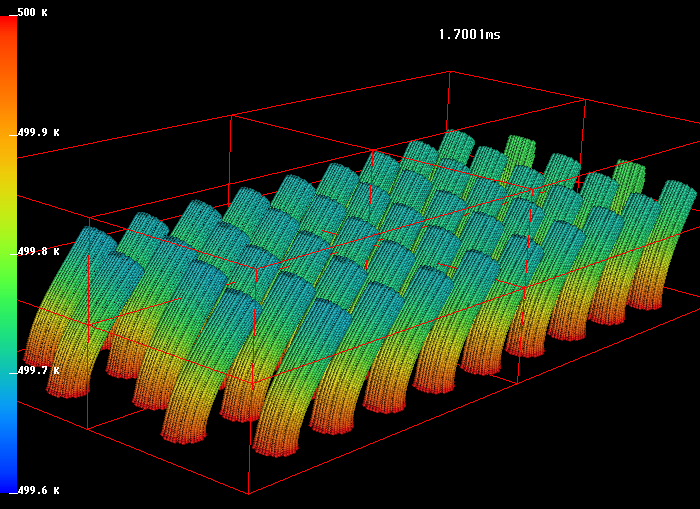NSF award: CBET-0933574 (07/01/2009 - 06/30/2012)
 Both rarefaction and fluid-structure-interaction (FSI) effects are significant for many microscale systems. Examples include micro valves, pumps, actuators, particulate flows, porous flows, two-phase flows, micro-air-vehicles, combustion, and heat exchangers. Rarefaction becomes significant for gaseous systems at the microscale and is typically quantified by the Knudsen number (ratio of the fluid mean free path to the characteristic length of the system). Rarefaction causes discontinuities of the velocity and temperature at fluid-solid boundaries, which, for the slip flow regime, between .01 and .1 are typically modeled with first-order slip velocity and temperature jump boundary conditions. FSI effects are significant for any system in which the thermal-fluid and structural dynamics are coupled, and consequently cannot be considered independently. As stated previously, many microsystems operate with FSI effects, and as microfabrication technologies begin go utilize more flexible materials FSI effects will become even more significant. Current computational techniques do not have the ability or versatility to accurately model these effects for a generic microsystem. Subsequently, there are only a few numerical studies which have considered microscale FSI and no widely available studies considering both FSI and rarefaction in a microsystem.
Both rarefaction and fluid-structure-interaction (FSI) effects are significant for many microscale systems. Examples include micro valves, pumps, actuators, particulate flows, porous flows, two-phase flows, micro-air-vehicles, combustion, and heat exchangers. Rarefaction becomes significant for gaseous systems at the microscale and is typically quantified by the Knudsen number (ratio of the fluid mean free path to the characteristic length of the system). Rarefaction causes discontinuities of the velocity and temperature at fluid-solid boundaries, which, for the slip flow regime, between .01 and .1 are typically modeled with first-order slip velocity and temperature jump boundary conditions. FSI effects are significant for any system in which the thermal-fluid and structural dynamics are coupled, and consequently cannot be considered independently. As stated previously, many microsystems operate with FSI effects, and as microfabrication technologies begin go utilize more flexible materials FSI effects will become even more significant. Current computational techniques do not have the ability or versatility to accurately model these effects for a generic microsystem. Subsequently, there are only a few numerical studies which have considered microscale FSI and no widely available studies considering both FSI and rarefaction in a microsystem.The figure to the right is an array of pins under going deformation caused by the asymmetric oscillating vortices on the downstream side of the micro pin fins at Reynolds number greater than 47 which produe a time varying pressure differential. The fin motion increases local heat transfer due to enhanced mixing and the increades relative velocity of the flow over the solid surface with potential applications in CPU cooling.
